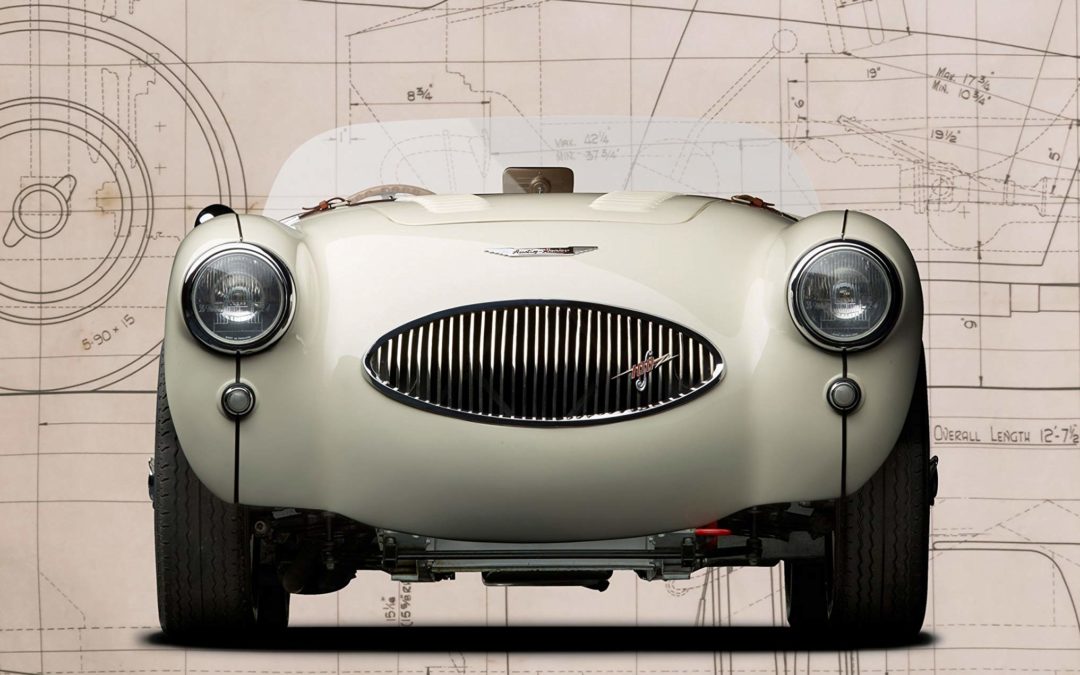
Written in collaboration with Gerry Coker, the designer responsible for the iconic Austin-Healey 100 and Sprite, this extraordinary volume represents the most accurate and complete account of the sports cars built at Warwick, Longbridge, Abingdon and West Bromwich. The author had unprecedented access to Donald and Geoffrey Healey’s private papers, diaries, scrapbooks and photo albums, corporate and financial records from BMC, Donald Healey Motor Company and Healey Automobile Consultants, the files of Jensen Motors and Nash-Kelvinator, dozens of personal interviews and exhaustive research into previously unavailable primary source material. As a result, Healey: The Men and the Machines offers a compelling examination of the true story behind these incredible automobiles and the individuals who created them.
From his early childhood and heroic service as an aviator in the Royal Flying Corps during the First World War, this book provides a comprehensive account of Donald Healey’s motoring career, including competition outings and his involvement with Invicta, Riley and Triumph. The story of the Healey marque’s birth during the darkest days of the Second World War is told through the words of the men involved, revealing the myriad obstacles that faced the small team during a period of strict rationing, limited resources and government meddling.
Fast, elegant and endowed with excellent handling, the early Healey sports cars were among the fastest in the world, acquitting themselves admirably at events such as the Alpine Rally, Mille Miglia and the 24 Hours of Le Mans, but Warwick’s survival was constantly in doubt until the landmark agreement that resulted in the Nash-Healey erased many of small firm’s financial struggles. With access to Nash-Kelvinator’s internal correspondence for the first time, the authors are able to set the record straight about this crucial period in the marque’s history, including the controversial machinations behind the development of the Healey Hundred that made a smash debut at the 1952 London Motor Show.
Lavishly illustrated with previously unpublished photographs, Austin-Healey competition and record-breaking efforts are covered in exquisite fashion, seen through the eyes of legendary names like Rauno Aaltonen, Clive Baker, Paddy Hopkirk, Count Johnny Lurani, Lance Macklin, Timo Mäkinen, Roger Menadue, Don and Erle Morley, Pat and Stirling Moss, Carroll Shelby, John Sprinzel, and Ann and Tommy Wisdom. Equally fascinating are the stories behind the troubled Jensen-Healey and Donald Healey’s attempts to continue building sports cars well into the 1980s, refusing to enter a sedate retirement that would have been so richly deserved.
Destined to become the definitive reference on the subject, Healey: The Men and the Machines includes over 200,000 words, more than 700 detailed footnotes, and eight appendices that cover the competition and record breaking activities of the various models, specifications for every model produced, including the limited production variants, and Donald Healey’s personal musings on racing and sports car design. An instant classic, this is a work certain to inform and entertain enthusiasts of the men and machines that brought the world to its feet at a time when Britain was down on its knees.
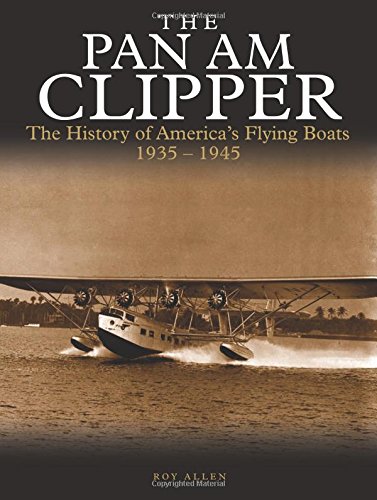
The history of Pan American Airways is, to a great degree, the story of international air transport and, within that, the flying-boat is one of the airliner’s most recognizable aircraft.
The Pan Am Clippers, as the Boeing B-314s, Sikorskys and Martin M-130s were known, were probably the most romantic planes ever built. The experience of flying in them was intended to rival the great ocean liners that had previously been the only way for passengers to cross the globe. Sleeping berths, lounges, silver goblets and meals on real china served by white-coated stewards were all part of the Clipper experience.
The Pan Am Clipper covers one of aviation history’s most inspiring and magical periods. Illustrated with more than 100 archive photographs, this impressive book is a tribute to a technical wonder that continues to fascinate and captivate many people today.

The Mercedes-Benz W123 was launched in 1976 and sales quickly surpassed those of its predecessor, the W114. The W123 went on to become the most successful Mercedes, selling 2.7 million cars.This book features the history of the development of the car within the context of the Mercedes-Benz company and global motor industry; the styling, engineering and technical advances introduced over the lifetime of the three series, and the press reactions to them.
Full technical specifications are given together with customer options, equipment and interior trim for each model. Production numbers and vehicle number sequences are listed and little-known details of the manufacture of the car in China are given. There is a chapter on buying and owning a 123-series Mercedes.

As you’ll discover in his incomparable memoir, the inventor, mechanic, TV presenter, and definition of the British eccentric Edd China sees things differently. An unstoppable enthusiast from an early age, Edd had thirty-five ongoing car projects while he was at university, not counting the double-decker bus he was living in. Now he’s a man with not only a runaround sofa, but also a road-legal office, shed, bed, and bathroom. His first car was a more conventional 1303 Texas yellow Beetle, the start of an ongoing love affair with VW, even though it got him arrested for attempted armed robbery. A human volcano of ideas and the ingenuity to make them happen, Edd is exhilarating company. Join him on his wild, wheeled adventures; see inside his engineering heroics; go behind the scenes on Wheeler Dealers. Climb aboard his giant motorized shopping cart, and let him take you into his parallel universe of possibility.

Spacecraft takes a long look at humankind’s attempts and advances in leaving Earth through incredible illustrations and authoritatively written profiles on Sputnik, the International Space Station, and beyond.
In 1957, the world looked on with both uncertainty and amazement as the Soviet Union launched Sputnik 1, the first man-made orbiter. Sputnik 1 would spend three months circling Earth every 98 minutes and covering 71 million miles in the process. The world’s space programs have traveled far (literally and figuratively) since then, and the spacecraft they have developed and deployed represent almost unthinkable advances for such a relatively short period.
This ambitiously illustrated aerospace history profiles and depicts spacecraft fromSputnik 1 through the International Space Station, and everything in between, including concepts that have yet to actually venture outside the Earth’s atmosphere. Illustrator and aerospace professional Giuseppe De Chiara teams up with aerospace historian Michael Gorn to present a huge, profusely illustrated, and authoritatively written collection of profiles depicting and describing the design, development, and deployment of these manned and unmanned spacecraft. Satellites, capsules, spaceplanes, rockets, and space stations are illustrated in multiple-view, sometimes cross-section, and in many cases shown in archival period photography to provide further historical context.
Dividing the book by era, De Chiara and Gorn feature spacecraft not only from the United States and Soviet Union/Russia, but also from the European Space Agency and China. The marvels examined in this volume include the rockets Energia, Falcon 9, and VEGA; the Hubble Space Telescope; the Cassini space probe; and the Mars rovers, Opportunity and Curiosity.
Authoritatively written and profusely illustrated with more than 200 stunning artworks, Spacecraft: 100 Iconic Rockets, Shuttles, and Satellites That Put Us in Space is sure to become a definitive guide to the history of manned space exploration.
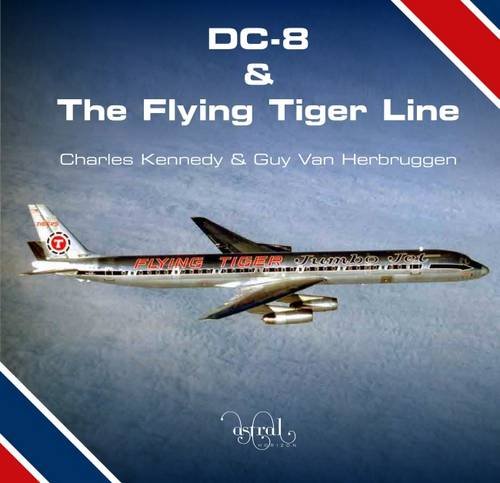
The story of a pioneering airline and a historically significant aircraft; the combination changed the world of air commerce forever. This unique book tells the story of the Douglas DC-8 jetliner in the service of air cargo giant Flying Tiger Line, with a detailed individual airframe history of every one of the forty-seven DC-8s that flew for the airline; pilot s recollections of their time on type; a wealth of photographic, technical and promotional material; and a pair of epic historical essays. The first covers the history of the airline, of American Volunteer Group pilots in China in World War 2, evolving into a fly-by-night cargo outfit in the propliner era, growing in size and sophistication until the Flying Tiger Line was a global brand in air cargo in the golden days of the jet age. The other essay covers the DC-8 from the beginning of the Douglas story in the time of the Wright Bros right up to the last active DC-8 of today including an in-depth look at NASA s DC-8-72 flying laboratory. Aviation journalist Charles Kennedy (Airliner World, Aviation News, Airways) and historian Guy Van Herbruggen (who led the project to rescue and restore the original Flying Tigers DC-8 simulator) have created an essential addition to every aviation enthusiast s bookshelf.

Tiger 747 tells the story of the Boeing 747 in service with the Flying Tiger Line, Seaboard World and Federal Express, with an individual history of the thirty-four jumbos operated. An in-depth historical essay covers the history of the airline, starting with the American Volunteer Group pilots in China in World War 2 that evolved into a fly-by-night cargo outfit in the propliner era, growing in size and sophistication until the Flying Tiger Line was a global brand in air cargo in the golden days of the jet age; with an in-depth look at Seaboard World and Fedex who make up a vital part of the story. A second epic chapter covers the 747 from the early days of the Boeing Airplane Co in the early days of powered flight right up to the latest models, with an emphasis on the 747 Classic. This unique book also includes technical information and descriptions, and pilot and crew memories. An essential addition to every aviation enthusiast s bookshelf.

Flying Tiger Memories tells the story of one of the world s most legendary airlines, through the eyewitness stories and memories of its employees, pilots, flight attendants, mechanics and friends. From the its roots as a group of American pilots fighting in China during World War 2, the first scheduled cargo airline in the United States was born: the Flying Tiger Line. The story continued through the golden piston prop days of Commandos and Connies to the Jet Age with the Boeing 707, Douglas DC-8, Boeing 747 Jumbo, all the way up to the 1989 billion-dollar merger that made FedEx a global brand. Daring tales of bravery such as flying thousands of tonnes of rice into Phnom Penh under fire ahead of the Khmer Rouge. Incredible stories of survival such as the crew who spent two days in the Pacific menaced by sharks after ditching at sea. And charming memories of animal charters gone wrong, flight attendants lost in Hong Kong, father-and-son cockpit crews, and the love, professionalism and rebelliousness found in a unique organisation with a special mission, and the famous Can-Do Spirit. Includes 330 images.

The German A4 rocket, or V2 – ‘Vergeltungswaffen Zwei’ (Vengeance Weapon 2), was the most sophisticated and advanced weapon developed in Europe during the Second World War. From September 1944 to March 1945, German army launch teams fired more than 3,000 V2 rockets at targets in England, France, Belgium and even within Germany itself. Many V2s were fired from mobile launch sites and from concealed wooded areas, using fleets of transporters and trailers with sophisticated ancillary and support vehicles. Traveling at the edge of space, the V2 rockets fell without warning at supersonic speeds, turning buildings and streets into cratered rubble, and terrorizing the civilians targeted by these attacks.
Drawing on a wide range of archive sources, rare personal accounts and interviews conducted with personnel associated with the A4/V2 program, rocketry expert Murray R. Barber traces the origins of the V2 and presents a detailed view of the research conducted at the secret, experimental rocket-testing facility at Kummersdorf West and the vast, infamous base at Peenemunde. This important new work reveals the transformation of the rocket into a weapon of war and describes the A4 in detail as well as the intense and often difficult intelligence effort by the Allies to discover more about this highly secret and unprecedented weapon, and to destroy it.
The author also describes the field-testing of the A4 rocket, its reliability problems and the remedies and compromises employed to deal with them. He reveals the activities of the SS and their machinations to gain control of the rocket program from the Wehrmacht, as well as the subsequent operational deployment of the V2 in Operation Penguin, the ‘vengeance’ offensive against the British Isles.
Illustrated throughout with rare and many previously unseen images (including color photographs), technical drawings and maps, this is the most comprehensive book ever on the V2, and includes important new details of the post-war development and testing of the rocket and its role in the dawning of the space age.

In May 1935, twenty-two-year-old Max Reisch and nineteen-year-old Helmuth Hahmann set out in a small motor car to find a land route from India to China. Their journey across Asia took them from Haifa to Tokyo.
In this lively account, the author regales us with one story after another, struck with wonder or struggling against disaster in countries which deeply concern us today: Iraq with its oilfields, ancient Iran in the throes of modernization, proud Afghanistan, and British India with its stunning variety of civilization.
Before the building of the Burma Road, driving from India to southern China meant sinking over the axles in mud on forest tracks and crossing torrents on rickety ferryboats. It also meant encounters with strange and fascinating peoples and places.
Originally written by Max Reisch in German, this brand new English translation of An Incredible Journey by Alison Falls captures all the excitement of the journey, and features fascinating historical photos of the journey from the Reisch archives.
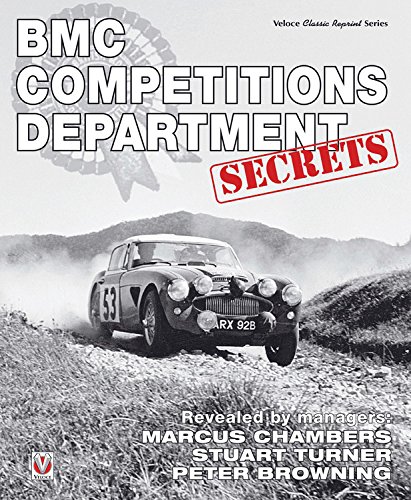
The revealing and surprising inside story of the legendary BMC Works Competitions Department told by the three Competition Managers of the highly successful BMC/British Leyland race and rally teams based at Abingdon. The book reveals the inner workings and machinations of one of the most successful motor sport teams Britain has ever seen. Based on previously unpublished internal memos and documents, and the recollections of the prime movers, the book describes the ups and downs, and the politics of big time competition in an exciting era. An excellent and entertaining read and an important factual documentation, no motor sport enthusiast should be without this book.

The Convair F-102A Delta Dagger was developed for the US Air Force as a supersonic interceptor at the onset of the Cold War. It featured a 60-degree swept delta wing to lessen drag coefficient and yield stability at very high altitudes. True to its design, the F-102A made more than 1,000 intercepts of Soviet bombers in defense of Western airspace. Within the US, 22 Air National Guard squadrons were equipped with the Dagger from 1960 until its retirement in 1976. The 102 was also deployed to Vietnam during the war in Indochina, initially to protect bases from North Vietnamese aircraft. Later, it flew fighter patrols, escorted B-52s, and was used offensively to attack ground installations. Exported to NATO allies Greece and Turkey, the Turks flew the F-102A during their invasion of Cyprus in 1974. After retirement in the US, 152 of the planes were converted to high-speed, unmanned drones for use as test targets for newer fighters.

The Mitsubishi Zero is one of the great legendary fighter aircraft ever to have graced the skies. Symbolic of the might of Imperial Japan, she represented a peak of developmental prowess in the field of aviation during the early years of the Second World War. Engineered with maneuverability in mind, this lightweight, stripped-back aircraft had a performance that left her opponents totally outclassed. The dogfights she engaged in with the Chinese, British, Dutch and American warplanes in the 1941-42 period are the stuff of aviation legend. The Zero fighter had four major assets – agility, long-range, experienced and war-blooded pilots and, most importantly of all, a total inability of the Allies, particularly in the Pacific Theater of operations, to believe that Japan could produce such a machine. Despite a whole series of eyewitness reports from China, where she had swept the skies clean of all opposition, western minds were closed, and remained so until the brutal facts imposed themselves on their biased mindsets. All aircraft designs are a compromise of course, and the Zero had faults as well as strengths, two of which were to finally doom her; one was her lack of armor protection and the other was the inability of the Japanese to match the overwhelming production strength and innovation of Allied aircraft construction. Even so, she remained a potent threat until the end of the war, not least in her final role, that of a Kamikaze aircraft, in which she created as much havoc on the sea as she had done earlier in the air.
Peter C. Smith takes the reader on a journey from inspired inception to the blazing termination of this unique aircraft, the first Naval fighter to be superior to land-based aircraft. It describes in detail the many victories that punctuated the early days of its operational career as well as the desperate dying days of the Second World War which witnessed her final demise. Smith also lists the preserved Zero aircraft on display today. This is a fast-paced and fascinating history of a fighter aircraft like no other.

World-renown, the race 24 Hours of Le Mans draws competitors from France of course, but also throughout Europe, the USA, Japan, but also Venezuela, China, Brazil. That’s why the test is the cornerstone of the new World Endurance Championship FIA.
Since 1978, the annual 24 Hours of Le Mans, through the same editorial team, proposes to revive by the text but especially by the image but also the race preparations and fever that grips Prefecture Sarthe throughout the week prior to departure. All cars and drivers are presented. Preliminary tests at the explosion of joy after the checkered flag through the weighing, the parade of drivers and especially the highlights of each hour, nothing is missing.
For the more passionate, a technical chapter with tables and statistics finishes complete the set. And making use of recognized photographers, the atmosphere that continues to evolve between late afternoon, night and sunrise in a different setting from that of a traditional circuit is fully restored.
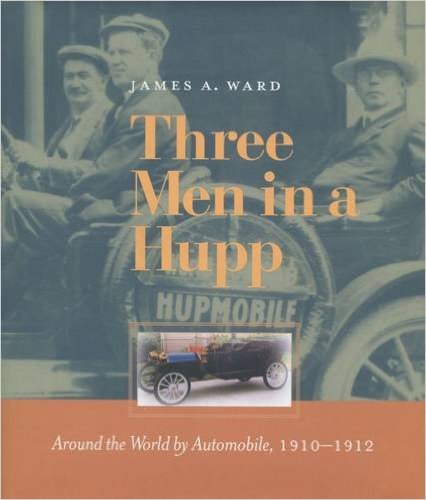
In late 1910, three American adventurers set off on a remarkable around-the-world journey by automobile. Sponsored by the Hupp Motor Car Corporation, the trip was intended to publicize the durability of the Hupmobile and help stimulate export sales.
The car was first driven from Detroit to San Francisco—a very difficult journey in its own right in 1910. From San Francisco, the car and its drivers took a steamship to Hawaii, and from there to Fiji, Australia, New Zealand, and Tasmania, unloading and touring at each port of call. The men and their machine spent the next five weeks attempting to drive through the Philippines, and then pushed on to Japan and China, where they managed to stay one step ahead of the Chinese revolution. They then drove across India, and from there, sailed to Egypt, brining the first automobile ever to be seen in that country. Next, the Hupmobilists sailed to Italy. In Rome, the adventurers met Pope Pius X, and then drove north to Germany and France. They crossed the English Channel to Folkstone, toured England, and then ferried from Liverpool to Ireland. They returned to New York in time for the 1912 auto show.
In the end, the Hupmobile was driven 41,000 miles and transported by steamship another 28,000. A new world was dawning, both for transportation and for American business enterprise.

The Mikoyan-Gurevich MiG-21 Fishbed, a lightweight air-combat fighter, is one of the most famous military aircraft in the world. No other warplane has been manufactured in such large numbers (over 10,000 in the Soviet Union and about 2,000 in China and India) since World War II. Nor has any other fighter served with so many air forces (the current count is 56). This global success was the MiG design bureau’s fourth in succession in the immediate postwar era.Powered by one Tumansky R-11F-300 rated at 12,675 lb (w/ afterburner), the MiG-21 was easy to maintain, tough in the harshest environments, and very affordable. It was designed to climb fast to high altitudes, at all heights, and to excel in close combat. This book covers all MiG-21 upgrades and variants, as well as combat and armament specifications. Over 300 photos are used to illustrate the story of the MiG-21. It features technical diagrams and gives a comprehensive development history. Other topics include design, development, structural detail, international production, trials, comparisons, and much more.
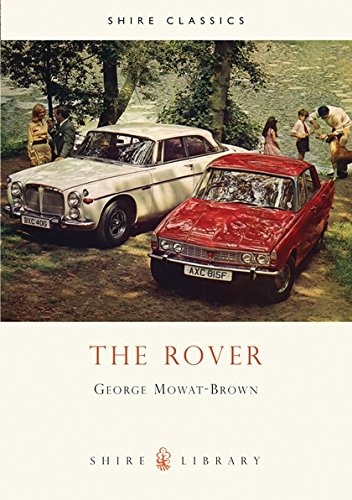
For over a century, no surviving marque so accurately charted the triumphs and tribulations of the British motor-manufacturing industry as Rover. This book traces the history of the company, starting with the cycle-making precursors of the Rover Company Limited. Covering the struggle through the Depression of the 1930s, and the expansions, mergers and contractions of the post-war period – the time of Rover’s greatest success – the author then discusses Rover’s placement within British Aerospace, the influence of the Japanese company Honda, and the ownership by BMW and the Phoenix Consortium. This book celebrates the history of Britain’s last volume car producer, up to its sale to the Nanjing Corporation of China.
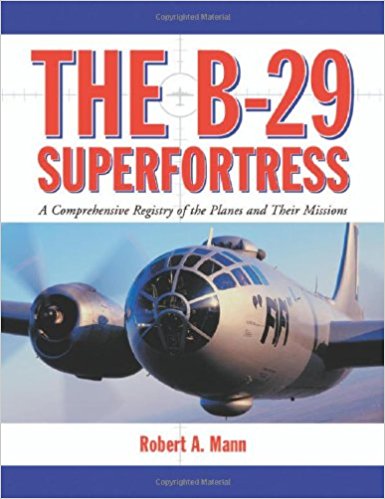
The B-29 Superfortress was for many years a cornerstone of American military aviation. Best known as a bomber, it also served in reconnaissance, as a tanker, and as a rescue plane. It was a crucial tool for American and Allied forces during World War II, Korea and beyond. This operational history of the B-29 gives in-depth information on the career of each plane. A list of the names and serial numbers of the planes, each plane’s history from delivery date to removal from service, a description of the B-29’s physical characteristics and performance parameters, and a description of the five B-29 variants are provided. Sections of the book give complete mission data for the B-29’s World War II service in the China-Burma-India theater of operations, operations over Japan, aerial mining missions and test atomic bombing runs.
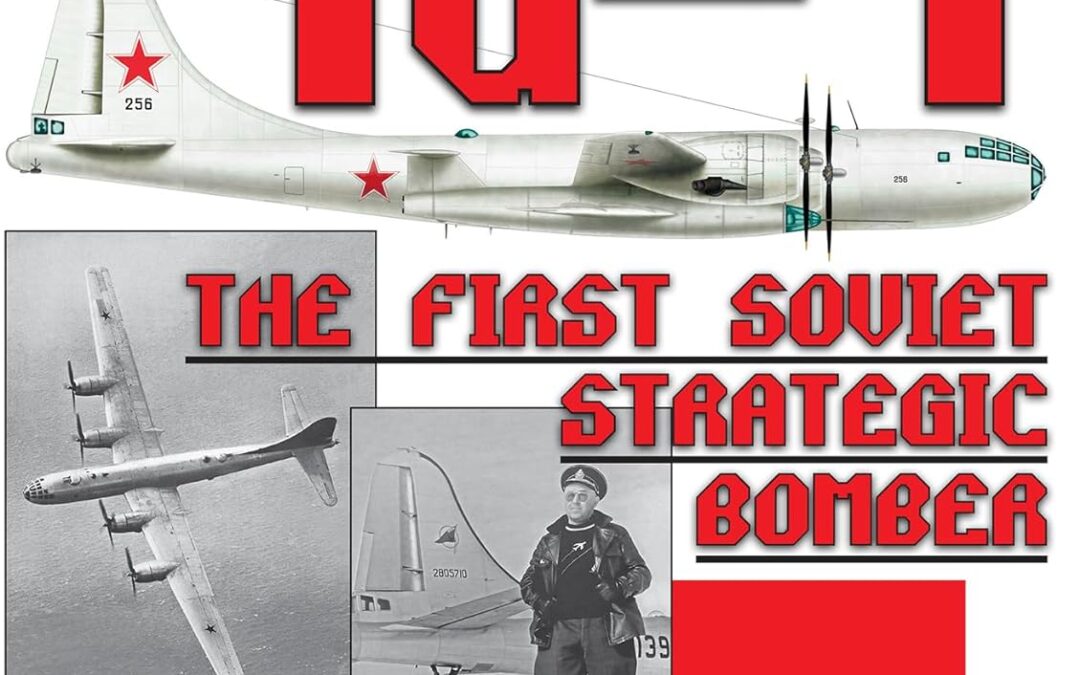
After World War II, the Soviet Union and the USA, who had been allies in the war, started moving towards political and military confrontation. The Soviet Union urgently needed a strategic bomber capable of striking at the USA. Thus, the windfall of three battle-damaged B-29s forced to land in Soviet territory was most welcome. The Soviet Union kept them; a huge reverse-engineering effort ensued, resulting in a Soviet copy of the Superfortress (the Tu-4) and a major technology boost to the Soviet aircraft and avionics industries. From then on, the “Soviet Superfortress” evolved independently, some of the Tu-4 versions having no direct U.S. equivalent. These included the Tu-4K missile carrier, a wing-to-wing flight refueling tanker, and the Tu-4T transport. The Tu-4A was the first Soviet nuclear-capable bomber. Experimental versions included engine testbeds, a towed escort fighter program, and more. The book also describes the Tu-4’s production and service history (including service in China―the only nation besides the USSR to operate the type) and touches on the Tu-4’s transport derivatives, the Tu-70 airliner, and the Tu-75 military airlifter. The book is illustrated with many color side views and hitherto unpublished photographs.

SIGNED
Wheeler Dealers is one of the most popular car programs on TV, the show’s stars, Mike Brewer and Edd China, taking viewers on a mission to save repairable enthusiasts’ vehicles and use their skills to research and buy used cars to be restored and sold for profit. Spring 2015 sees the airing of the Discovery Channel show’s 12th series eagerly awaited by a growing fan base around the world. This heavily illustrated manual highlights key restoration procedures for each of ten of the show’s most popular project vehicles, and allows Mike and Edd to provide additional specialist advice and insider hints and tips for those contemplating a restoration project. Essential and entertaining reading for Wheeler Dealers fans, classic car enthusiasts and would-be restorers.
Advice and practical information for key restoration tasks on Austin Mini Mk1, Peugeot 205 GTI 1.9, Mazda MX-5, Land Rover Discovery TDI, Subaru Impreza WRX, Jaguar E-type Series 3, Willys MB Jeep, Lamborghini Uracco, Porsche 911 (993) Targa and Amphicar.






















